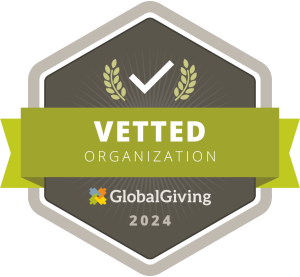Last updated on August 14, 2021

On-line education is here to stay. That involves a whole new paradigm shift in the way you approach work, plan strategy and implement tasks. Transition from traditional classroom to the online mode, demands thinking a new, changing attitudes and strategic planning to achieve desired outcomes.
Going On-line
With the onset of on-line education, new tools/apps have emerged for development, presentation, delivery, and evaluation/testing. A good understanding of these tools/apps and changes in the learning environment is vital if on-line learning is to achieve desired results. The most popular app used in Sri Lanka for on-line learning is Zoom. Here students can interact with teachers directly. (Please see box for tools)
Student Teacher Relationship
The most important change is the student teacher relationship. In the traditional class- room the teacher presents the material from a higher level and the student is the passive recipient. However, in on-line learning the situation is reversed. The student assumes a self-learning stance while the teacher becomes a facilitator. Thus, the role of the student changes from passive recipient to assertive self-learner, while the teacher changes from ‘sage on stage’ to ‘guide on the side’.
In the new role the teacher must engage students with voice and choice. Ask questions and not to be afraid to use humor. Even if you have a thousand online learners connected live, treat them as individuals. Share your screen with interesting presentations loaded with images. Using only voice inhibits retention of the message by the student.
Tools of Content Presentation-
PowerPoint is used for content presentation. It is accepted that the teacher on screen enhances the student’s assimilation of content. The app Prezi which affords this facility gives better results
Organizing Content
Educational content is uploaded onto a Learning Management System (LMS). An LMS is a software application for the administration, documentation, tracking, reporting, automation and delivery of educational courses, training programs, learning and development programs. The Methodology is implemented through Learning Management Systems. This application enables teachers to upload content for students to access and learn. Among the other facilities are important announcements, modules, assignments, grading of students, discussion boards for asynchronous conversation with tutors and colleagues and real time chats.
On-line Exams
On-line exams have limitations when analytical thinking by students is required. Open Book Exams allow students to refer notes/text books at exams. It allows time for reflection and encourages analytical thinking. This concept allows teachers to test the application of knowledge, comprehension and critical thinking skills of students. In addition, it should be supplemented with Viva Voce to give it more meaning.
On-line Ethics.
Ethical issues in on-line education arise due to differences in cultural, and social backgrounds of teachers and students which have a bearing on their behavior and conduct. They need to strike a balance on norms of acceptable behavior on-line. The basic premise is that one should act in a manner which would not damage the dignity and honor of the other. Eg. They should use civil language when on-line.
Cyber Threats and Security
Cyber threats cause enormous problems to the successful implementation of on-line education. It is therefore essential that the both teachers and students are aware of the potential dangers and the monitoring tools they can use to ensure cyber security.
- Unauthorized Access to WIFI Network
Most WIFI accounts have a default network name or Service Set Identifier (SSID) when it is installed. The default SSID which carries the company’s name help hackers to break in.It is always safe to change the SSID to one with no trace of personal information. - Phishing e- Mails
Phishing e-mails are e-mails carrying malicious attachments which if clicked on, will spread malware throughout the entire system. Alternately they might ask you to click on a particular link with the same result. If the link is not recognizable DON’T click on it. Learn more-click here. - Insecure Internet Connections
Students and teachers working remotely using home WIFi connections expose themselves to potentially malicious elements accessing their networks. Always ensure that WIFi networks are private and secure. Ensure that your WIFI has a unique wireless network password with letters symbols and numbers and turn on the router’s encryption setting immediately after the connection is installed. - Unsecured Web-sites
Students and teachers need to ensure that the web-sites they visit are safe. If an URL begins with “https” the site is certified as secure. If the URL begins with only “http” it is not certified and caution should be exercised when clicking on such web-sites. - Unsafe Apps
Unsecured apps increase risk of hacker activity. It is sound practice to block sign-ins for these apps to keep your accounts safe.
Above all make sure that you keep your devices away from thieves.
Additional Tips for Students
- Distractions while learning on-line – avoid going into other non-educational sites, games, etc. However, the internet provides opportunities to access a variety of information which may be useful for your educational goals. Learn to be selective while surfing the internet.
- Avoid clicking on unfamiliar e- mails which may lure you into getting involved with scams, cyber harassment etc.
- Avoid getting addicted to mobile phones/computers. Strike a balance in your use of these devices.
Additional Tips for Teachers.
- Be careful about whom you give log-in passwords to. They could be dangerous people with malicious intent.

